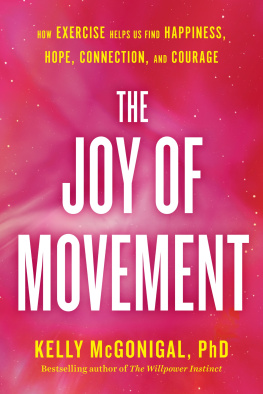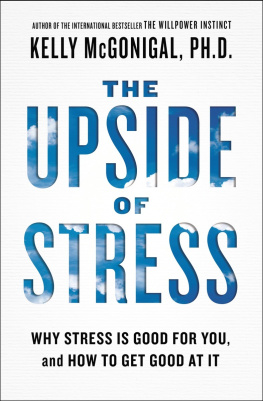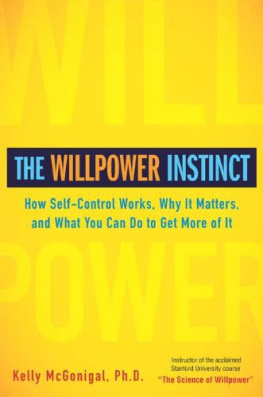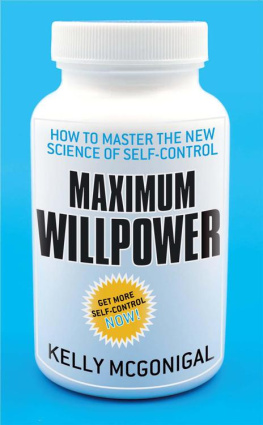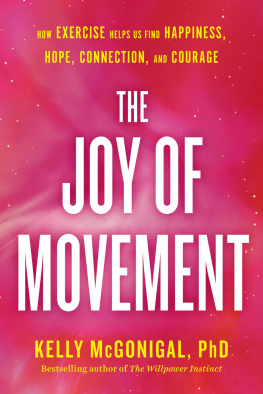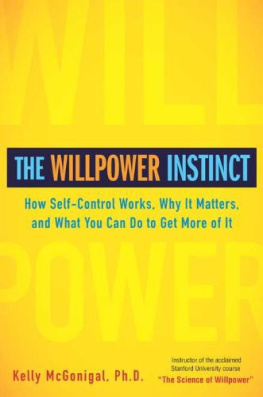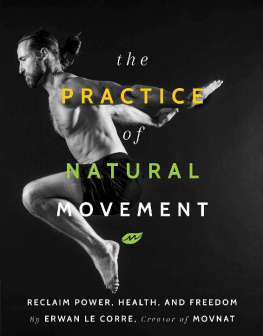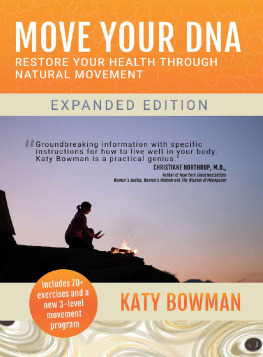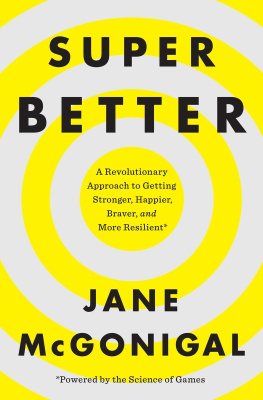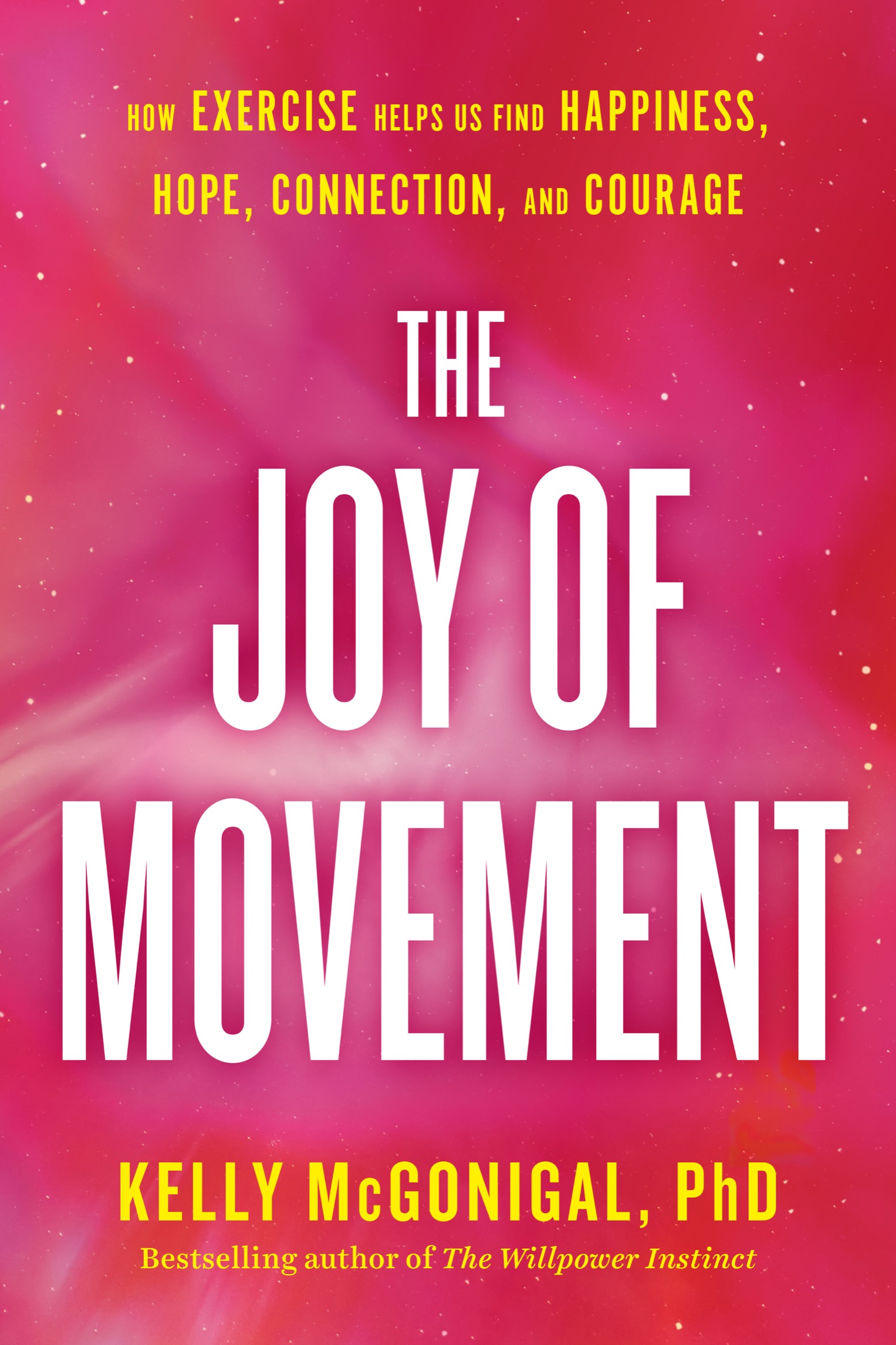Praise for The Joy of Movement
In this outstanding contribution to the science of well-being, Kelly McGonigal has written a fascinating book on the complex links between physical movement, mental health, and prosocial behavior. Beautifully written and brimming with historical reflections and modern scientific findings, this is a book to savor.
Paul Gilbert, PhD, OBE, author of The Compassionate Mind; Mindful Compassion; and Overcoming Depression
The Joy of Movement will be required reading for athletes of all types, from professionals to people starting their first walking programs. Kelly McGonigals empathy shines through the stories and research, providing a jolt of energy that will make any reader feel like the athlete they are. We arent sure what was more funsitting down and reading the book, or putting it down and moving with big smiles.
Megan Roche, MD, and David Roche, authors of The Happy Runner
The Joy of Movement illuminates why we feel most alive when in motion, and how exercise builds social connections, both while were working out and during the many hours a day were not.
Scott Douglas, author of Running Is My Therapy
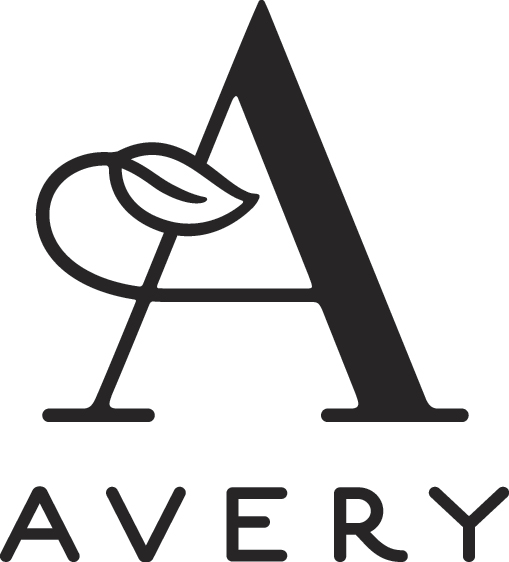
AN IMPRINT OF PENGUIN RANDOM HOUSE LLC
penguinrandomhouse.com
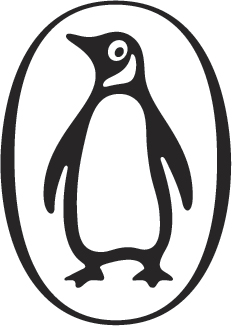
Copyright 2019 by Kelly McGonigal, Ph.D.
Penguin supports copyright. Copyright fuels creativity, encourages diverse voices, promotes free speech, and creates a vibrant culture. Thank you for buying an authorized edition of this book and for complying with copyright laws by not reproducing, scanning, or distributing any part of it in any form without permission. You are supporting writers and allowing Penguin to continue to publish books for every reader.
ISBN 9780525534105 (hardcover)
ISBN 9780525534112 (ebook)
Neither the publisher nor the author is engaged in rendering professional advice or services to the individual reader. The ideas, procedures, and suggestions contained in this book are not intended as a substitute for consulting with your physician. All matters regarding your health require medical supervision. Neither the author nor the publisher shall be liable or responsible for any loss or damage allegedly arising from any information or suggestion in this book.
This book explores the psychological and social benefits of movement. It is not intended to offer individual advice or medical guidance. Although I discuss the potential psychological benefits of movement, this does not imply that exercise is a replacement for other treatments, therapies, or approaches for mental or physical health that you might be currently using or considering. Before beginning any new exercise program or physical activity, seek the advice of your physician or current health-care providers. I also recommend that you seek professional guidance and/or community support for any new physical goal, such as training for an athletic event. When setting physical goals and exploring different ways of moving, take into consideration your current abilities, health, and life circumstances.
Version_1
To all the movement instructors who have inspired me, and to all those who have moved with me in classes over the years, thank you for sharing the joy.
CONTENTS
INTRODUCTION
There are very few memories I can look back on and say with certainty, That was a moment my life changed. One of them took place when I was twenty-two. I was a graduate student in psychology and enrolled in a seminar called The Psychology of Shyness. I had always been a shy kid, and I continued to struggle with anxiety. Our project for the course was to take action on something that was important to us but that we had avoided out of fear or self-doubt. I chose to pursue my lifelong dream of becoming a group exercise instructor. I had grown up doing workout videos in my living room. While other kids fantasized about becoming the next Sally Ride or Steven Spielberg, I imagined myself leading a room full of people in step-touches and jumping jacks. In high school, I studied both Spanish and French because I had read that you needed to speak three languages to teach aerobics at a Club Med resort.
Now I found myself standing outside an exercise studio on campus, minutes away from auditioning to teach for the aerobics program. Despite having practiced for so many hours that I could perform the choreography in my sleep, familiar sensations of panic flooded my system. I felt sick to my stomach. My fingernails dug into my palms. This mattered so much to me, I thought my heart was going to burst. I was overcome by the desire to rescue myself from my escalating anxiety. To just walk away, go back to my apartment, and pretend the whole thing never happened.
I remember this moment clearly, standing outside the studio, wanting to runbut choosing to stay. Maybe youve had a moment like this, tooa turning point where you said yes to something that you both dreamed about and were terrified by. Looking back, I think one of the reasons I stayed was everything I had learned about courage from my favorite forms of exercise. From yoga, I had learned how to take a deep breath and stretch beyond my comfort zone. From dance, I had learned that no matter how worried and discouraged I felt at the beginning of class, the music and movement would transport me to a state of optimism. And from my toughest cardio workouts, I had learned that a pounding heart is not always a sign of fear. Sometimes, it is proof that your heart is being strengthened.
The decision to stay and audition changed my life because it set me on the path of teaching group exercise. In the nearly two decades since, teaching has become a source of tremendous joy and meaning. Over the years, I saw again and again how movement could shift a persons mood. How it could send someone back into the world renewed with hope. I got to witness how exercise could empower participants to sense their own strength, or give them permission to let loose. As I taught individuals of all ages and varied physical abilities, I learned how movement could serve so many roles. It was a way to practice self-care, an opportunity to tackle challenges, and a place to make friends. Many of the classes I taught turned into communities that not only moved together, but also supported and celebrated one another. In these classes, I learned what collective joy feels like, in both the synchrony of our steps and in the group hugs when a participant returned after a long absence. Leading group exercise was so fulfilling that I never stopped. It wasnt just the satisfaction of sharing the joy of movement that kept me going; it was also how movement helped me. Exercise has, at various times in my life, rescued me from isolation and despair, fostered courage and hope, reminded me how to experience joy, and given me a place to belong.
Mine is not an uncommon story. Around the world, people who are physically active are happier and more satisfied with their lives. This is true whether their preferred activity is walking, running, swimming, dancing, biking, playing sports, lifting weights, or practicing yoga. People who are regularly active have a stronger sense of purpose, and they experience more gratitude, love, and hope. They feel more connected to their communities, and are less likely to suffer from loneliness or become depressed. These benefits are seen throughout the lifespan. They apply to every socioeconomic strata and appear to be culturally universal. Importantly, the psychological and social benefits of physical activity do not depend on any particular physical ability or health status. They have been demonstrated in people with chronic pain, physical disabilities, serious mental and physical illnesses, and even among patients in hospice care. The joys described abovefrom hope and meaning to belongingare linked first and foremost to

